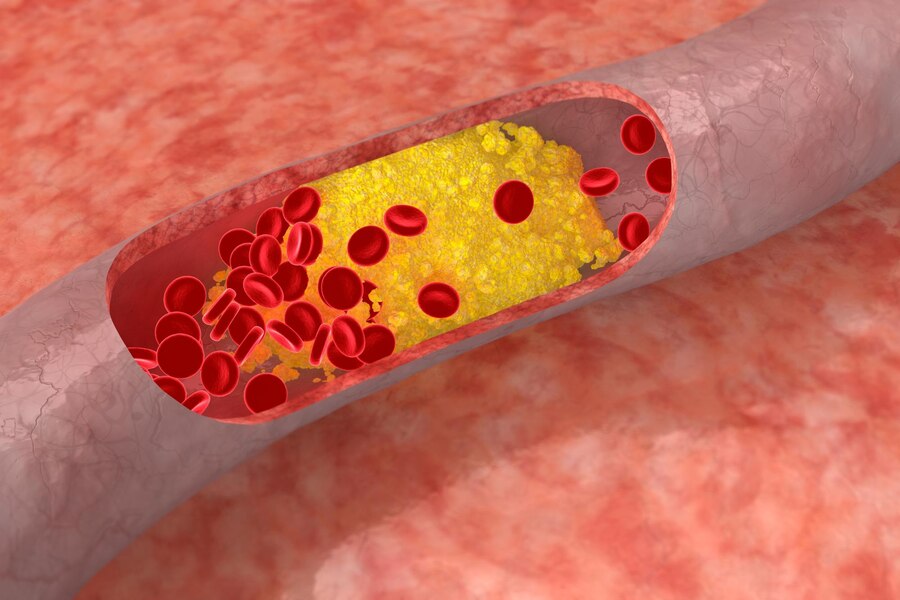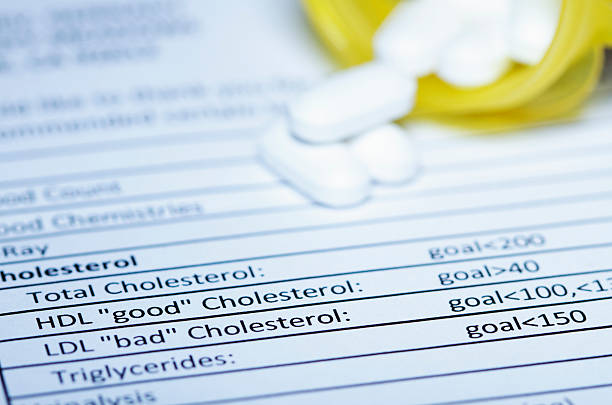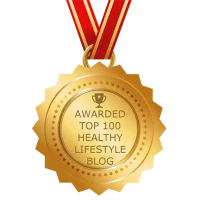High cholesterol is a prevalent condition that affects millions of people worldwide. It is a significant risk factor for cardiovascular diseases, including heart attacks and strokes. While high cholesterol can affect anyone, the symptoms, risks, and management strategies can differ based on gender. This article delves into the specific symptoms of high cholesterol in females, exploring how it manifests, its implications, and the best practices for managing and preventing this condition.
What is Cholesterol?
Cholesterol is a waxy, fat-like substance found in every cell of the body. It is essential for the production of hormones, vitamin D, and substances that help digest food. The body gets cholesterol from two sources: the liver, which produces all the cholesterol the body needs, and dietary intake from animal-based foods.
There are two main types of cholesterol:
- Low-Density Lipoprotein (LDL): Often referred to as “bad” cholesterol, LDL carries cholesterol to the cells. High levels of LDL can lead to the buildup of plaque in the arteries, increasing the risk of cardiovascular diseases.
- High-Density Lipoprotein (HDL): Known as “good” cholesterol, HDL carries cholesterol away from the cells and back to the liver, where it can be processed and removed from the body.

Why is High Cholesterol a Concern?
High cholesterol is a concern because it can lead to atherosclerosis, a condition characterized by the buildup of plaque in the arterial walls. This buildup can narrow or block arteries, reducing or blocking blood flow to vital organs. The risks associated with high cholesterol include:
- Heart Disease: The leading cause of death among women, heart disease can result from the hardening or narrowing of the coronary arteries due to plaque buildup.
- Stroke: High cholesterol can increase the risk of stroke by contributing to the formation of blood clots that can obstruct blood flow to the brain.
- Peripheral Artery Disease (PAD): This condition occurs when plaque builds up in the arteries that supply blood to the limbs, leading to pain and numbness.
Symptoms of High Cholesterol in Females
One of the most challenging aspects of high cholesterol is that it typically does not present obvious symptoms. This is why it is often referred to as a “silent” condition. However, some indirect signs and symptoms may suggest high cholesterol levels, especially when associated with other cardiovascular risk factors. These symptoms can vary between individuals but may include:
1. Chest Pain or Angina
Angina, or chest pain, occurs when the heart muscle doesn’t get enough oxygen-rich blood. This can happen due to the narrowing of coronary arteries caused by plaque buildup. Women may experience angina differently than men, often describing it as a sharp, burning pain rather than the classic pressure-like sensation.

2. Shortness of Breath
When cholesterol levels are high, it can lead to the narrowing of the coronary arteries, reducing blood flow to the heart. This can cause shortness of breath, especially during physical exertion or emotional stress.
3. Fatigue and Weakness
Women with high cholesterol may feel unusually tired or weak, even when not physically active. This can be due to reduced blood flow to the muscles and tissues, which need adequate oxygen and nutrients to function properly.
4. Numbness or Coldness in Extremities
High cholesterol can contribute to the development of peripheral artery disease (PAD). PAD can cause numbness, tingling, or coldness in the legs and feet due to reduced blood flow to these areas.
5. High Blood Pressure
While not a direct symptom, high blood pressure often accompanies high cholesterol. The buildup of plaque in the arteries makes it harder for blood to flow, increasing the pressure within the arteries.

6. Yellowish Deposits on the Skin
Xanthomas are yellowish deposits of cholesterol that can appear on the skin, particularly around the eyes, elbows, knees, and tendons. While more common in individuals with a genetic predisposition to high cholesterol, these deposits can be a visible sign of elevated cholesterol levels.
7. Sudden Dizziness or Balance Issues
Dizziness or balance issues can occur if high cholesterol leads to a stroke or transient ischemic attack (TIA). These symptoms should be taken seriously and warrant immediate medical attention.
Risk Factors for High Cholesterol in Females
Several factors can increase the risk of developing high cholesterol in females, including:
1. Genetics
Family history plays a significant role in cholesterol levels. If close family members have high cholesterol or heart disease, the risk is higher.
2. Age
Cholesterol levels tend to rise with age. Women often see an increase in cholesterol levels after menopause, likely due to changes in hormone levels.
3. Diet
A diet high in saturated fats, trans fats, and cholesterol can contribute to high cholesterol levels. Foods like red meat, full-fat dairy products, and processed foods are common culprits.
4. Physical Inactivity
Lack of physical activity can lead to weight gain and higher cholesterol levels. Regular exercise helps maintain a healthy weight and improves cholesterol levels.
5. Obesity
Excess body weight, particularly around the abdomen, is associated with higher levels of LDL cholesterol and lower levels of HDL cholesterol.
6. Smoking
Smoking damages blood vessels, reduces HDL cholesterol, and increases the risk of developing cardiovascular diseases.
7. Diabetes
Diabetes can affect cholesterol levels, often leading to higher levels of LDL cholesterol and lower levels of HDL cholesterol.
Diagnosing High Cholesterol
High cholesterol is diagnosed through a blood test called a lipid panel, which measures:
- Total Cholesterol: The overall amount of cholesterol in the blood.
- LDL Cholesterol: The “bad” cholesterol that can lead to plaque buildup in the arteries.
- HDL Cholesterol: The “good” cholesterol that helps remove cholesterol from the bloodstream.
- Triglycerides: Another type of fat in the blood that can increase the risk of heart disease.
Regular screening is crucial, especially for women with risk factors or those over the age of 45. The American Heart Association recommends that adults have their cholesterol levels checked every four to six years.

Managing High Cholesterol in Females
Managing high cholesterol involves a combination of lifestyle changes, medication, and regular monitoring. Here are some strategies to manage and reduce high cholesterol levels:
1. Dietary Changes
Adopting a heart-healthy diet is crucial in managing cholesterol levels. Key dietary recommendations include:
- Reduce Saturated and Trans Fats: Limit intake of red meat, full-fat dairy products, and processed foods that contain trans fats.
- Increase Fiber Intake: Foods high in soluble fiber, such as oats, beans, and fruits, can help lower LDL cholesterol.
- Eat More Omega-3 Fatty Acids: These healthy fats, found in fish like salmon and mackerel, as well as flaxseeds and walnuts, can improve heart health.
- Choose Healthy Fats: Use olive oil, avocado, and nuts instead of butter or margarine.
2. Regular Physical Activity
Exercise can help raise HDL cholesterol and lower LDL cholesterol. Aim for at least 150 minutes of moderate-intensity aerobic activity or 75 minutes of vigorous-intensity activity each week, along with muscle-strengthening activities on two or more days a week.
3. Weight Management
Losing excess weight can help lower cholesterol levels and reduce the risk of cardiovascular diseases. Even a modest weight loss of 5-10% of body weight can make a significant difference.

4. Quit Smoking
Smoking cessation is one of the most important steps to improve heart health. Quitting smoking can improve HDL cholesterol levels and reduce the risk of heart disease.
5. Medications
When lifestyle changes are not enough to lower cholesterol levels, medications may be prescribed. Common medications include:
- Statins: These drugs reduce the production of cholesterol in the liver and help remove cholesterol from the blood.
- Bile Acid Sequestrants: These medications help remove cholesterol from the blood by binding to bile acids in the intestine.
- Cholesterol Absorption Inhibitors: These drugs reduce the absorption of cholesterol from the diet.
- PCSK9 Inhibitors: These newer medications help the liver absorb more LDL cholesterol, reducing its levels in the blood.
6. Regular Monitoring
Regular check-ups and lipid panels are essential to monitor cholesterol levels and adjust treatment plans as needed. Women should work closely with their healthcare provider to manage their cholesterol and reduce the risk of cardiovascular diseases.
Conclusion
High cholesterol is a significant health concern that requires attention and proactive management, especially in females who may experience unique symptoms and risk factors. Understanding the symptoms, such as chest pain, shortness of breath, and fatigue, can help in early detection and intervention. By adopting a heart-healthy lifestyle, including a balanced diet, regular exercise, and avoiding smoking, women can effectively manage their cholesterol levels and reduce the risk of serious cardiovascular diseases. Regular medical check-ups and collaboration with healthcare providers are crucial in maintaining heart health and preventing complications associated with high cholesterol.
Frequently Asked Questions
- Question: What are the symptoms of high cholesterol in females?
Answer: High cholesterol in females typically presents no direct symptoms but can lead to cardiovascular diseases such as coronary artery disease (CAD), stroke, and peripheral artery disease (PAD).
- Question: How does menopause affect cholesterol levels in women?
Answer: Menopause often leads to an increase in LDL cholesterol and a decrease in HDL cholesterol, raising the risk of heart disease in women.
- Question: Can hormonal changes during pregnancy affect cholesterol levels?
Answer: Yes, hormonal fluctuations during pregnancy can impact cholesterol levels, potentially increasing the risk of developing high cholesterol.
- Question: What lifestyle factors contribute to high cholesterol in females?
Answer: Sedentary lifestyle, unhealthy diet high in saturated and trans fats, and smoking are significant contributors to high cholesterol levels in women.
- Question: Are there visible signs of high cholesterol on the skin?
Answer: Yes, xanthomas, which are yellowish lumps of fatty deposits, can appear on the skin, particularly around the eyes, elbows, knees, and tendons, indicating high cholesterol levels.
- Question: How can I lower my cholesterol naturally?
Answer: Adopting a healthy diet rich in fruits, vegetables, whole grains, and lean proteins, along with regular exercise and smoking cessation, can help lower cholesterol levels naturally.
- Question: What medications are commonly used to treat high cholesterol in females?
Answer: Statins are often prescribed to help lower LDL cholesterol levels in women with high cholesterol, along with other medications such as bile acid sequestrants and PCSK9 inhibitors.
- Question: At what age should females start getting screened for high cholesterol?
Answer: It is recommended that women start getting screened for high cholesterol around the age of 20 and continue regular screenings every four to six years, or more frequently as advised by their healthcare provider.
- Question: Can high cholesterol in females lead to gallstones?
Answer: Yes, high cholesterol levels can increase the risk of developing gallstones, which may cause symptoms such as abdominal pain, nausea, and vomiting.
- Question: Is family history a significant risk factor for high cholesterol in females?
Answer: Yes, having a family history of high cholesterol or cardiovascular disease increases the likelihood of developing high cholesterol, underscoring the importance of regular screenings and lifestyle modifications.





